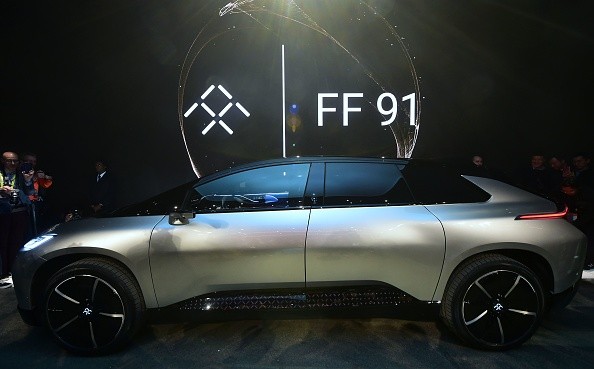Faraday Future, an electric vehicle (EV) startup affiliated with Beijing-based Leshi Internet Information and Technology Corp, has cut back on its plans to build vehicles in the U.S., as part of efforts to challenge Tesla, according to company and public officials.
Reuters cited two sources with direct knowledge of the plans, as saying that the company also plans to reduce its products portfolio from seven to two vehicles.
The company's change of plan came after Jia received $2 billion infusion from Sunac China Holdings for his properties, which include sister company LeEco, the sources said.
Meanwhile, a Las Vegas city official said on Tuesday, Jan. 31, that the company will instead build a much smaller vehicle assembly facility than originally planned, which will be located in North Las Vegas.
According to North Las Vegas city manager Qiong Liu, the company will start building a 650,000-square-foot (60,390-square-meter) facility later this year, on the original site of a plant that was planned to take up 3 million square feet.
Faraday's move is seen as a confirmation that the company's operations were overextended, as Jia Yueting, the company's founder, had previously said.
Some company officials also claimed that the company is having cash flow issues, adding that at least a dozen key U.S. executives have left the company in the last nine months.
Commitment to Plan
Faraday, however, said in a statement that it will still continue with plans to build a larger plant, but gave no definite timetable for it.
And even without the date set for the plant's completion, the company was reportedly hiring contractors to building the factory shell, the sources said.
"We remain committed to the State of Nevada and are continuing our $1-billion investment in the region over the next few years," according to the statement.
In December last year, Faraday announced plans to build its first auto factory in Nevada, which has annual capacity of 150,000. The company plans to open it in late 2017. The company has invested about $1.3 billion for the plant, documents submitted to the state showed.
Documents made by Faraday's finance team in early 2016 further showed that the company has allocated $1 billion convertible bond offering, to produce seven electric vehicles, ranging from an ultra-luxury car to a tiny commuter vehicle.
According to sources, Faraday has now reduced its initial portfolio to just two models: the FF91 flagship, which will be unveiled in early January, and the FF81, a smaller, less expensive car to match Tesla Model X.
The smaller Nevada plant can build not more than 10,000 cars a year and will open not until 2019, the sources added.
Future Plans
Most Faraday vehicles and other LeSee models will be produced in Zhejiang Province, which agreed to subsidize the building of a new assembly plant, which has a capacity of 450,000 vehicles. It is set to open in 2019.
Work at the Nevada plant stopped last fall as Faraday failed to issue the required $75 million performance bond for infrastructure development at the factory site, Nevada state treasurer Dan Schwartz told Reuters.
The company was also sued for non-payment by several supplies, including Futuris, a seat supplier, and media company Mill Group.
According to the documents, the company's convertible bond offering in China in 2016 will be followed by a Series A venture capital round in 2017. After that, it will turn to U.S. investors for debt financing in 2018.
As its ultimate goal, the company will make its initial public offering in 2020, at a time when it is expected to be building a million vehicles a year in the U.S. and China, with a projected market value about three times Tesla's current size.



























